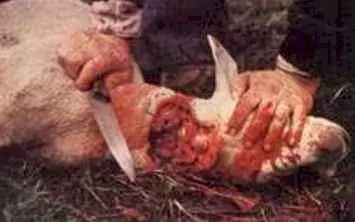In the Old Testament times the Israelites offered blood sacrifice unto God. It would be the first male out of every flock that opened the womb of its mother, and was without blemish. It could be a sheep, goat, calf, bullock, yes, any valuable livestock of the people of God.
These sacrifices were images of the great and last sacrifice of the Only Begotten Son, which was to come. When Jesus had offered himself up to be the last sacrifice, he was the last living creature to be sacrificed, since there was no longer any need for an image of what was to come, since it had already happened.
From that day we needed another reminder.
We needed a reminder that Jesus actually DID offer himself as the great and last sacrifice for the sins of us all.
But the way he commanded us to remember this was not through blood sacrifices, but by partaking of emblems that represents his flesh and his blood.
Note: The emblems, the broken bread and the wine, are not, or do not become the flesh and blood of Jesus, but they REPRESENT the flesh and blood of Jesus to the penitent sinner.
The bread represents the flesh, or body, that Jesus freely permitted to die, and then to be resurrected so that we can be resurrected. In other words, when we take the bread of the sacrament of the last supper we do so and remember in gratitude that he died that we might live.
The wine represents the blood that was spilt for the sins that you and I, and all other people commit, and though our sins might be as red as crimson, the blood of Jesus will wash our souls as white as the driven snow. This means that when we drink the water of the sacrament, we do so in remembrance of the forgiveness of sins, that comes through the shedding of much blood.
This doesn’t mean that we have a feast of blood, but rather a feast of rejoicing in the resurrection and the forgiveness of our sins, not forgetting that the price was very dear indeed.










